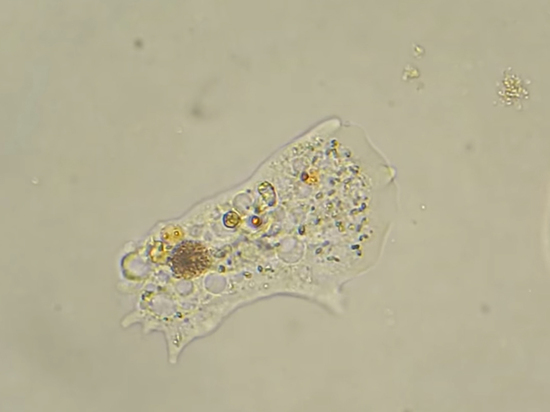Amoebas have become a reservoir for the spread of severe pneumonia in humans
[ad_1]

In St. Petersburg, scientists have discovered a new type of dangerous bacteria
In bottom sediments from the shallow bays of Zunda, one of the straits connecting the Baltic and North Seas, specialists from St Petersburg University have discovered a new species of amoeba, Balamuthia spinosa. When studying the genome of a new species, specialists from St. Petersburg State University and the Research Center of the Russian Academy of Sciences came to the conclusion that it is likely to be a carrier of a bacterium that causes legionellosis, a type of severe pneumonia. This disease mainly affects people with weakened immune systems. The “contagiousness” of some amoebas has long been known: these bacteria cause amoebic dysentery, and some types of Acanthamoeba are the causative agents of Acanthamoeba keratitis.
Until recently, the genus Balamuthia included only one species of amoeba, whose representatives are capable of causing a rare but dangerous disease – granulomatous amoebic encephalitis – in humans and animals. Samples of natural material containing amoebas Balamuthia spinosa were obtained during an expedition to Denmark. Despite the fact that these amoebae could not be grown in laboratory culture and only single cells were studied, they were described and documented using modern methods of light microscopy, – said Elena Nasonova, Leading Researcher at the Laboratory of Cytology of Unicellular Organisms of the Institute of Scientific Centers of the Russian Academy of Sciences.
From single cells, experts isolated the DNA of Balamuthia spinosa for further deciphering the sequences of its genes. Then the received material was handed over to colleagues from the Resource Centers of the Science Park of St. Petersburg State University.
The researchers determined the systematic belonging of the genetic material and confirmed that a new species of amoeba had been discovered. However, in addition to the amoeba genome, specialists from the Institute of Scientific Centers of the Russian Academy of Sciences found a curious find in the samples: fragments of bacterial genomes, among which Legionella predominated. Since amoebas feed on bacteria, the scientists concluded that Balamuthia spinosa probably tried to “eat” legionella, but did not digest it for some reason. Therefore, “food” remained to exist inside the amoeba. Amoeba cells can carry live bacteria for many years and then release them into the environment. This is why this form of coexistence of amoebas and bacteria is dangerous for humans.
– This, of course, does not mean that today these amoebas pose any socially significant threats. However, there is a need to study Balamuthia spinosa and other types of amoebas, which can be “reservoirs” for the transfer of infectious agents, so that we can understand the mechanisms and extent of their possible spread, – Elena Nasonova explained.
Now scientists continue to decipher and process the genetic material obtained from Balamuthia spinosa.
[ad_2]
Source link








